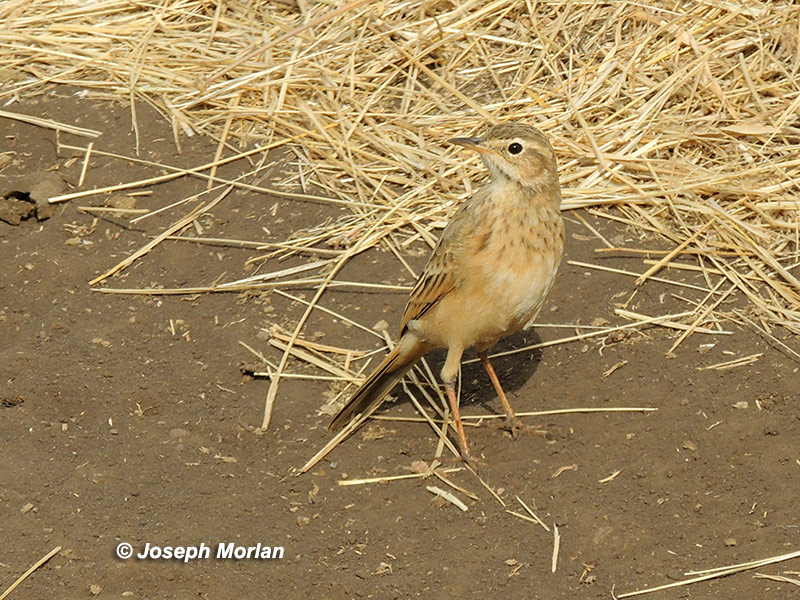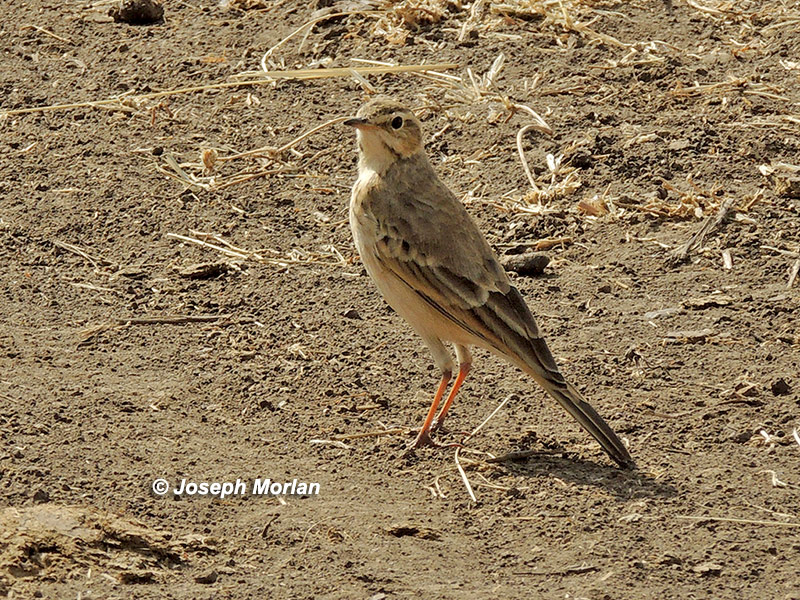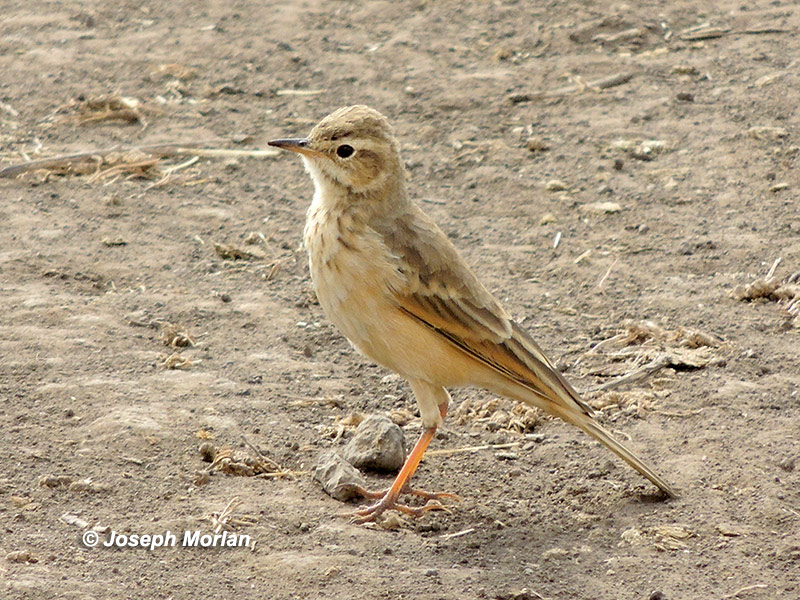


In the field we identified these birds as Plain-backed Pipit (Anthus leucophrys) as illustrated in Stevenson & Fanshawe (2002). However, the Red-List range map shows A. leucophrys barely getting into north central Tanzania and not reaching Ngorongoro crater. If this map is correct, there should be only two pipit species expected at Ngorongoro, African (Anthus cinnamomeus) and Long-billed (Anthus similis). African is more boldly streaked on the breast and both are much more heavily marked on the mantle cf. Plain-backed Pipit. The shorter tail with rich buff edges and shorter bill further support Plain-backed. Also there are numerous recent eBird records of Plain-backed Pipit from Ngorongoro. I have tentatively concluded the Red-List map is inaccurate and that Plain-backed Pipit appears to have expanded its range south.
Zimmerman et al. (1996) attributed birds from the western Serengeti to the much darker A. l. zenkeri, but I suspect most Plain-backed Pipits in northern Tanzania adjacent to Kenya should be goodsoni which reportedly overlaps zenkeri at Nakuru and Mara. Birds adjacent to Uganda (west of Lake Victoria) are A. l. zenkeri and those in SW Tanzania adjacent to Zambia and Malawi are A. l. bohndorffi.
I have a special fondness for plain birds or birds that have the word "plain" in their name. This was one of my favorites. So it came as a shock to learn that both HBW and Clements (but not IOC or BirdLife) consider goodsoni to be a race of Buffy Pipit (A. vaalensis) of Southern Africa, and not the Plain-backed Pipit. These pipits present a taxonomic and identification nightmare.
The suggestion that goodsoni (described as a race of A. leucophrys by Meinertzhagen in 1920) belongs to A. vaalensis apparently originated with Van Someren in 1922 (Birds of Kenya and Uganda, being addenda and corrigenda to my previous paper in " Novitates Zoologica" xxix 1922) [PDF].
In 1961 Hall put goodsoni back with A. leucophrys (Bull. Brit. Mus. Nat. Hist., Zool., 7 (5): 245-289) [PDF]. Britton (1980) noted, "The somewhat browner, paler goodsoni bears a superficial resemblance to A. vaalensis. Intergrades between goodsoni and zenkeri occur, but individuals of both types have been collected at Mara and Nakuru, leading some authors to believe that two species are involved." Zimmerman et al (1996) questioned Britton's intergrades stating "...we have seen no specimens that support this."
In 1990 Clancey returned goodsoni to A. vaalensis (Clancey, P.A. 1990. A review of the indigenous pipits (Genus Anthus Bechstein:Motacillidae) of the Afrotropics. Durban Mus. Novit. 15:42-72. [I have not seen this paper].
In 1992 Pearson (The Birds of Africa. Vol. 4: i-xx, 1-609) following Hall (1961) stated, "This and the sandier and paler A. vaalensis exist as two good species in southern Africa. In East Africa, however, birds very similar to A. vaalensis (goodsoni and saphiroi) meet and intergrade with typical A. leucophrys; all northern populations are therefore treated here as races of leucophrys."
This arrangement was maintained by Clements through the 5th edition, but in the 6th (evidently influenced by publication of HBW), goodsoni became a race of Buffy Pipit. Howard & Moore did the opposite, starting with goodsoni being a race of Buffy Pipit through the 2nd edition but transferring it back to Plain-backed in their 3rd edition.
Further research is needed.
Nikon P510 Coolpix Point-and-shoot.